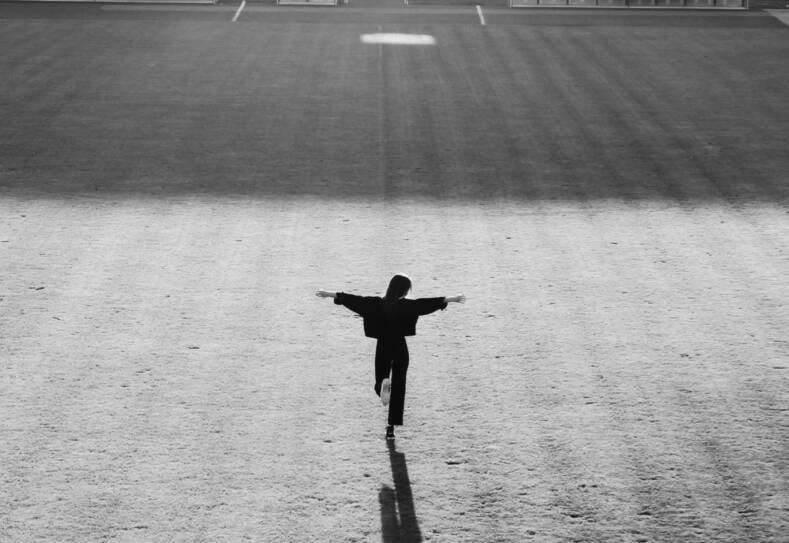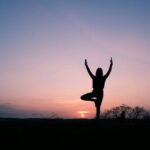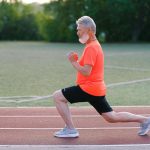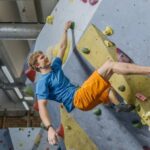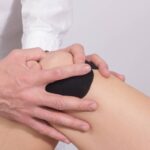Maintaining good balance is crucial for overall health and independence, especially as we age. Balance exercises are an effective way to improve stability, coordination, and proprioception. These exercises are easy to integrate into daily routines and can be performed by individuals of all ages and fitness levels. Engaging in regular balance exercises enhances your awareness and helps prevent falls, fostering a sense of confidence and security.
Standing on one leg, incorporating lunges, or using a chair for support are straightforward and effective balance exercises. These exercises help strengthen core muscles, improve posture, and increase muscle strength. Even a simple routine of 10 minutes a day can significantly boost your balance and stability.
Proprioception, your body’s ability to sense movement, action, and location, plays a vital role in balance. Regular practice not only improves physical stability but also sharpens reflexes and expands flexibility. In turn, this contributes to a more balanced and healthy lifestyle, reducing the risk of injuries and enhancing everyday movements.
Understanding Balance
Balance is a crucial aspect of physical health that involves multiple systems working together. The brain, ears, eyes, and sensors in the muscles all contribute to maintaining stability and preventing falls.
Components of Balance
Balance relies on the coordination of several body systems. Visual input helps the brain interpret the environment and adjust the body’s position accordingly. Vestibular input from the inner ear detects motion and changes in head position. Proprioceptive input involves the sensors in muscles and joints that provide awareness of body position and movement.
These inputs are processed by the brain, which then sends signals to muscles to make adjustments. This complex interaction ensures steady movement and posture.
The Role of the Vestibular System
The vestibular system, located in the inner ear, plays a key role in balance. It consists of three semicircular canals and two otolith organs. The semicircular canals detect rotational movements, while the otolith organs sense linear accelerations and gravity.
When these organs detect movement, they send signals through the vestibular nerve to the brain. Disorders in this system, such as inner ear infections or vestibular neuritis, can lead to dizziness and balance problems.
Proprioception and Balance
Proprioception refers to the body’s ability to sense its position and movement in space. This sense is derived from receptors located in the muscles, tendons, and joints.
These receptors send information to the brain about limb position and movement, enabling the brain to make adjustments to maintain balance. Impaired proprioception can result from injuries or neurological conditions, affecting one’s stability and coordination.
By focusing on exercises that enhance proprioception, individuals can improve their ability to maintain balance in various activities.
Importance of Balance Training
Balance training plays a crucial role in maintaining stability, preventing falls, and enhancing confidence. It is particularly vital for seniors, as it helps them stay independent and reduces the risk of serious injuries.
Preventing Falls and Injuries
Engaging in balance exercises strengthens the muscles that keep the body upright. By focusing on the legs and core muscles, individuals can improve their stability. This is essential as weak balance often leads to falls, which are a major cause of serious injuries such as hip fractures.
Exercises include:
- Single-leg stands
- Heel-to-toe walks
- Use of balance boards
Falls can cause significant health problems, making balance training a critical component of any fitness routine.
Balance in Everyday Activities
Everyday activities such as walking, climbing stairs, and even carrying groceries require good balance. Balance training enhances proprioception, which is the body’s ability to sense its position in space. This reduces the likelihood of trips and stumbles in daily life.
Common tools used:
- Chairs or walls for support
- Balance balls
- Trampolines
Incorporating these tools into regular exercise routines can make daily tasks easier and safer.
Benefits for Seniors
As people age, their balance naturally declines. This makes seniors more prone to falls and related injuries. Regular balance training helps seniors maintain their independence by reducing the risk of falls and improving their confidence in performing daily activities.
Key benefits include:
- Reduced risk of falls
- Enhanced mobility
- Improved mental health
Practices like Tai Chi and yoga are particularly effective for seniors, as they combine balance training with relaxation and mindfulness. These exercises also improve flexibility and strength, further protecting against falls and injuries.
Starting with Simple Exercises
Engaging in balance exercises can significantly enhance your stability and strength. This section outlines both static and dynamic balance exercises that are easy to perform and beneficial for improving overall balance.
Static Balance Exercises
Static balance exercises involve maintaining a position without moving. These exercises are particularly useful for beginners as they help build a foundation for more complex movements.
Tandem Standing:
- Reps: 1
- Sets: 1 to 3
- Intensity: Light to moderate
- Hold: 5 to 30 seconds
In tandem standing, stand with one foot directly in front of the other, heel to toe. Maintain good posture by keeping your spine straight and your core engaged. This exercise helps improve coordination and stability.
Flamingo Stand:
- Stand on one leg with the other leg lifted slightly off the ground.
- Maintain this position for 10 to 15 seconds, then switch legs.
- Use a chair or wall for support if needed.
The flamingo stand targets the muscles in your legs and core, enhancing your ability to maintain balance.
Easy Dynamic Balance Exercises
Dynamic balance exercises involve movement and are more challenging than static exercises. These exercises help improve coordination and reaction time.
Heel Raises:
- Reps: 10 to 15
- Sets: 2 to 3
- Intensity: Light
Stand with your feet hip-width apart and slowly rise onto your toes. Hold for a few seconds, then lower your heels back to the floor. This movement strengthens the calves and improves balance.
Leg Swings:
- Stand on one leg and swing the other leg forward and backward.
- Maintain a controlled movement to avoid losing balance.
- Perform 10 to 12 swings per leg.
Leg swings enhance dynamic stability by engaging the muscles used in walking and running.
Easy dynamic balance exercises like heel raises and leg swings can build functional strength and coordination, making everyday activities safer and easier.
Strengthening Exercises for Stability
Strengthening exercises targeting different muscle groups can greatly enhance stability. Key routines include lower body strengthening, integral core workouts, and whole-body fitness routines to achieve comprehensive stability improvement.
Lower Body Strengthening
Lower body exercises fundamentally improve stability by targeting muscles in the legs and ankles. Common exercises include squats and lunges. Squats help in building strength in the quadriceps, hamstrings, and glutes.
To perform a squat, stand with feet hip-width apart, keeping your back straight and lowering your body by bending your knees. For lunges, step one foot forward and lower your body until both knees are bent at 90 degrees. These movements help stabilize the body during various physical activities.
Integral Core Workouts
Core workouts are essential for stability, focusing on both core muscles and lower back. Planks and Russian twists are effective exercises.
During a plank, the body remains in a straight line from head to toe, engaging the abdominal muscles. For Russian twists, sit on the floor, lean back slightly, and twist your torso side to side while holding a weight. Both exercises enhance the engagement of abdominal muscles and the lower back.
Whole-Body Fitness Routines
Whole-body routines that involve multiple muscle groups promote overall stability and functional strength. Deadlifts, for instance, engage the legs, core, and lower back. Standing on a BOSU ball while performing exercises like squats can also challenge stability.
Deadlifts require lifting a weight from the ground while maintaining a straight back to engage multiple muscles. Using unstable surfaces like a BOSU ball requires additional balance effort, which strengthens stabilizing muscles in the legs and core. Such routines enhance coordination and stability.
Balance Challenges and Progressions
Improving balance involves gradually increasing the difficulty of exercises and incorporating various props and equipment. This approach ensures continuous improvement and adaptation of balance skills.
Increasing Difficulty over Time
To build balance skills, start with simple exercises and gradually add complexity. Begin with basic movements like standing on one leg.
As proficiency grows, add challenges such as closing the eyes or standing on an unstable surface. Consistent practice with increased repetitions aids in improvement. Over time, progress to dynamic balance exercises like step-ups or lunges, which demand greater coordination and stability.
The key is to make small, incremental changes, ensuring safety and proper form.
Using Props and Equipment
Incorporating props like a BOSU ball can elevate balance training. Begin with a BOSU ball flat side down for a more stable base.
Progress to using the ball side down for increased instability. Simple tools such as walls can also be useful; start with wall support and gradually decrease reliance. Balls, balance boards, and resistance bands add variety and challenge.
Each addition forces the body to adapt, enhancing proprioception and dynamic balance.
Yoga and Pilates for Enhanced Balance
Yoga and Pilates offer structured movements that enhance balance through improved posture, flexibility, and strength. Incorporating these practices into your routine can lead to significant improvements in overall stability.
Gentle Poses for Beginners
For those new to yoga, gentle poses like Tree Pose can make a huge difference in balance. In this pose, one stands on one leg, placing the foot of the opposite leg on the inner thigh or calf. The hands can come together at the center of the chest or extend above the head. This simple stance builds lower body strength and enhances focus.
For Pilates, exercises like the Standing Leg Lift are recommended. Stand tall, shift weight to one leg, and lift the other leg forward slightly off the ground. This movement, while subtle, engages the core and promotes stability. Consistent practice of gentle exercises helps to build a foundation for more advanced balance techniques.
Integrating Balance in Yoga Flows
Incorporating balance into yoga flows can elevate the practice. For instance, Chair Pose helps in enhancing balance by making the thighs work, and demands the engagement of the core. Begin by standing with feet together. Bend your knees, push hips back as if sitting in a chair, and raise arms overhead. Hold this pose, focusing on even weight distribution between both feet and a strong core.
For a more dynamic Pilates approach, include movements like Plank Leg Lifts. Start in a plank position and lift one leg at a time, holding for a few seconds before switching. This integrates core strength and balance into a more fluid motion.
Combining varied standing poses in sequences helps to develop a balanced practice. Poses like Warrior II and Half Moon provide additional balance challenges, ensuring that the body continuously adapts and strengthens. Regular practice of these routines leads to better posture, enhanced flexibility, and improved balance.
Safety Precautions and Modifications
When performing balance exercises, safety is a primary concern. Modifying exercises for health concerns and ensuring a safe environment are crucial steps to prevent injuries and enhance effectiveness.
Adapting Exercises for Health Concerns
Individuals with health conditions such as arthritis or heart problems may need to adjust their balance exercises. People with arthritis should consider low-impact exercises, such as weight shifts and heel raises, that minimize joint strain. Those with heart conditions should avoid high-intensity routines and consult a doctor before beginning any exercise program.
For those with limited mobility, seated exercises or using support like a wall or sturdy chair can provide stability. Example: seated marches or leg lifts. Key Tip: Always start slow and increase difficulty gradually to avoid overexertion.
Ensuring a Safe Environment
Create a safe exercise space by removing any potential hazards such as loose rugs or clutter. Ensure the area is well-lit to avoid tripping. Tip: Using non-slip mats can provide additional safety.
Wearing proper footwear is crucial to prevent slipping. Recommendation: Choose shoes with non-slip soles.
For added stability, perform balance exercises near a sturdy surface like a wall or counter. This provides something to hold onto if needed. Using equipment such as balance pads or resistance bands requires extra caution and should only be used under the guidance of a professional.
Measuring Progress and Setting Goals
Assessing your progress in balance exercises is crucial for sustained improvement. Consistency in practice can significantly enhance coordination and mobility. Setting specific, measurable, achievable, relevant, and time-bound (SMART) goals is essential.
Tracking improvements can be done through:
- Regular Assessments: Record your performance at weekly or monthly intervals.
- Balance Tests: Use simple tests such as standing on one leg or using a balance board.
Visual aids like progress charts can motivate and show tangible results over time. Combining these records with other fitness metrics, such as flexibility or strength, provides a holistic view of your mobility improvements.
Research suggests that frequent evaluations can keep individuals on track, making it easier to adjust goals if needed. Tools like fitness calculators or apps can also aid in setting and modifying goals efficiently.
Example of Measurable Goals:
| Goal | Time Frame | Measurement |
|---|---|---|
| Stand on one leg for 30 seconds | 2 weeks | Duration in seconds |
| Improve balance board duration by 20% | 1 month | Time spent without losing balance |
Setting realistic goals keeps individuals motivated, making it easier to see long-term benefits. Balance exercises, when tracked correctly, show improvements in daily activities and enhance overall well-being.
